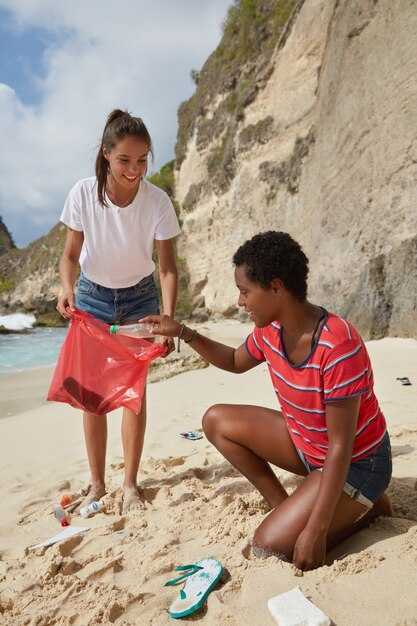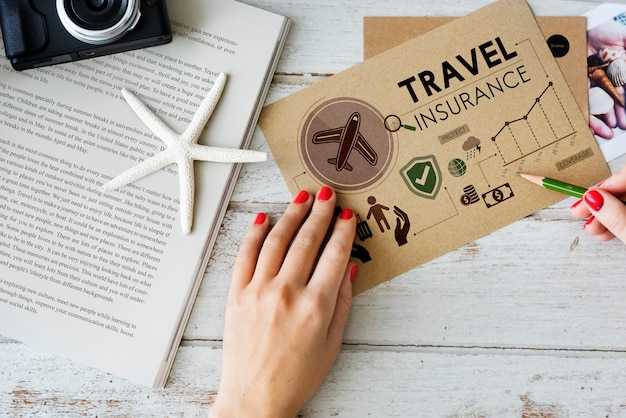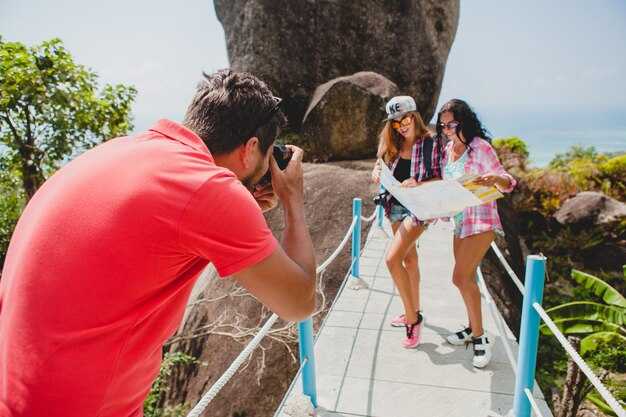Recommandation: Book a family-friendly all-inclusive resort on Antigua for your first three nights to simplify meals and activities for children. This approach reduces planning time and helps you settle into Caribbean light and sea breezes. Look for a property that provide supervised programs and a kid-friendly menu, with a shuttle to nearby beaches so you can relax rather than drive right away. Some accommodations feature a chateau-inspired interior that adds a touch of elegance without sacrificing practicality.
Rent a car or a motorcycle to explore at your own pace, especially on Antigua where the coast road offers vues of bays and coves. If you prefer to travel light, work with a local operator; as a course of action, they can arrange a half-day island tour and snorkel stops. Look over maps and ferry schedules; Either way, ensure insurance and confirm opening hours of attractions before you go.
On Antigua, pin down stops like Nelson’s Dockyard National Park, Shirley Heights, and Barbuda’s pink sands on the sister island Barbuda. The times of day matter: mornings are calmer at popular beaches, while late afternoons draw lines for the best photo vues. Aside from beaches, browse local markets for handicrafts and try a rum punch at a cliffside bar.
For a multi-island vibe, consider a side plan to Montserrat, a separate nation in the Caribbean. From Antigua you can book a short flight or charter, then spend a day exploring the Soufrière Hills volcano area and gardens. If Montserrat isn’t on your schedule, focus on Barbuda and the Leeward coast for more all-inclusive beaches and protected marine areas.
When you eat out, support local operators and markets to meet customers and taste fresh seafood, jerk chicken, and vegetarian options. Ask local vendors about boat tours, reef snorkeling, and shallow-water diving; this keeps experiences authentic and helps the local economy.
Peak times run December through April; book ahead for ferries and reef trips. Dress modestly on cultural sites and wear reef-safe sunscreen. Always check weather forecasts during hurricane season and stay hydrated on long beach days.
Best Time to Visit Antigua and Barbuda: Climate, Seasonal Highlights, and Crowd Levels
Best time to visit Antigua and Barbuda is late November through mid-April for fine weather, warmer sea, and manageable crowds. Expect 8–9 hours of sunshine daily, daytime highs near 28–30°C (82–86°F), and sea temperatures around 27–29°C. Rain is light in these months, roughly 1–3 inches monthly, with February and March the driest. This window provides a seamless travel experience and easier transport between islands and resorts. Another option is late April when crowds thin a bit and the sea remains warm.
For budget-minded travelers, May and October offer better value. May brings hotter days but still pleasant seas; hotel and flight rates are typically 10–30% lower than peak, and crowds are thinner on weekdays. October has higher humidity and occasional showers, yet you can find good deals and shorter queues at popular sites. If you want to maximize mileage on a rental, compare fuel economy across vehicles and choose a model with driver-ensured service to keep costs predictable. Also, plan meals with a local chef-owned spot to keep the bill reasonable and to sample authentic flavors.
Seasonal highlights and crowd levels: Peak runs from mid-December to mid-April, with cruise ships bringing extra visitors to Nelson’s Dockyard and St. John’s. On weekdays, beaches like Dickenson Bay are calmer; arriving early hours helps avoid crowds. Shoulder months offer fewer people and higher flexibility with activities and tours; you can book driver-ensured transfers and private guides to keep travels seamless. October–November deliver a higher chance of rain, but lower rates and shorter lines on popular excursions. If you plan filmed itineraries again, these months can provide better lighting and fewer crowds.
Practical tips to maximize your trip: start with a clear plan for transport, and keep left when navigating roads; use pre-arranged transfers to avoid taxi delays. Compare mileage, rates, and insurance across providers, and pick a model with good fuel economy to extend your budget. Reserve at least one chef-led dining experience and check the bill so you know what to expect. Outside peak weeks, many operators offer flexible hours, but you must book popular tours in advance for better availability. Also, aim to keep a positive pace–shorter, quality experiences beat rushing through sites. By combining smart timing with reliable transport, you get a smoother, more enjoyable Antigua and Barbuda travels, and this approach provides greater value across your trip plan.
Budget Planning for Your Trip: Flights, Accommodation Options, Dining, and Everyday Costs

Book flights with flexible dates to lock in better fares; this approach offers the best value when you compare routes via multiple gateways such as Miami, New York, Toronto, or London. From the US East Coast, round-trip fares typically range about $350-$700 in off-peak times and $550-$1,000 during peak seasons; from Canada roughly $400-$800; from Europe £450-£900. Travelers can adjust stay length and booking windows to balance costs.
Accommodation options span guesthouses ($60-$120 per night), self-catering apartments ($70-$150), mid-range hotels ($120-$250), and all-inclusive resorts ($250-$500+). To keep expenses in check, pick locations near bus routes or beaches; many smaller properties provide free parking, and you’ll receive a clear confirmation of included amenities. Where you stay sets the pace for your plan; nearby barrys offers quick snacks at low cost.
Dining costs: Local meals at casual eateries typically cost $5-$12; mid-range restaurants $12-$25 per person; sit-down dinners $20-$40; coffee $2-$5; bottled water $1-$2; cocktails $5-$12. Plan a few meals this way to maintain a balanced daily budget, and consider picking up groceries for breakfast or lunch to cut daily expenses.
Everyday costs and planning: Public buses run reliably with rides around $2 per trip; taxis start near $3-$4 for short hops; scooter rentals $40-$60 per day; car rental $60-$100 per day plus insurance. Parking at larger hotels is often free or a small daily fee. Keep digital copies of confirmations, and have cash on hand for small vendors. To speed through arrivals and check-ins, pack light suitcases and keep essentials in a carry-on.
Destinations and mosquitoes: Antigua and Barbuda offer beaches, coves, and nature trails; plan two or three core spots to avoid overloading days. Practical advice: mosquitoes can be active at dusk near mangroves, so pack repellent, wear long sleeves after sunset, and choose accommodations with screens. Another practical tip is to bring a lightweight rain jacket and sunblock, and use local maps to navigate between locations; plus you’ll have more flexibility if you reserve a couple of days for contingency.
Where to Stay: Resorts, Boutique Hotels, and Local Guesthouses Across the Islands
Start with Carlisle Bay on Antigua for a balanced blend of luxury, accessibility, and local flavor. The resort offers fully accessible rooms, a solid infrastructure, and door-to-door transfers from the airport, making driving around feel effortless. The on‑site spa, great pools, and easy beach access set a very comfortable tone for your first Island visit.
Resorts across Antigua and Barbuda deliver high-quality service and convenient logistics. In Antigua, Jumby Bay (a private island) requires a boat transfer and offers meticulous service, luxury villas, and a star staff to help with plans on the water or ashore. Curtain Bluff sits on the southeast coast with dramatic cliff views and two beaches, ideal for couples seeking privacy and reliable housekeeping. Hermitage Bay provides eco-luxury suites tucked into the hillside, with an emphasis on sustainable dining and local ingredients. For Barbuda, choose a small, locally run option near Codrington to minimize travel time and maximize time on the sand; always request accessibility info if needed and verify any mandatory features with a written confirmation before arrival.
Boutique options in Antigua emphasize character and personalization. The Inn at English Harbour offers intimate dining, curated excursions, and easy access to historic Nelson’s Dockyard. Cocos Hotel Antigua delivers bamboo‑built cottages perched above a turquoise cable of sea, with an authentic, laid‑back vibe and direct contact with guides who can tailor activities to your interests. These properties typically provide highly attentive service and a strong sense of place, making them perfect for travelers who value a unique atmosphere over room count.
Local guesthouses present authentic, budget-conscious opportunities with direct island hospitality. In Antigua, look for family‑run inns in coastal parishes or near the harbour area for quick access to maps, local eateries, and very friendly conversations with hosts. In Barbuda, Codrington and surrounding bays host modest guesthouses where you can join in on island activities and meet other travelers; these stays often include breakfast or shared kitchen access, which helps with spending control and social interaction. If you’re filming your trip or sharing feedback online, these stays usually provide genuine moments you can highlight to future guests.
Accessibility and planning tips: verify wheelchair options where needed, and confirm mandatory accessibility details in writing. For a smooth trip, arrange door-to-door transfers or a private driver, especially when traveling with luggage and suitcases; driving on the island is straightforward on main roads, but note that some routes in Barbuda require slower speeds and patience. Use maps to chart your day and ask guides for must‑see locations–they often know where the best beaches, viewpoints, and local eateries are located. If you’re coordinating with a travel partner, consider a three‑part stay across resort, boutique, and local guesthouse to maximize experiences and keep costs predictable.
Four practical tips to ensure a great stay: first, read recent feedback and watch filmed tours to gauge space and vibe; second, confirm activities and accessibility ahead of time; third, plan a door‑to‑door schedule to minimize backtracking; fourth, pack efficiently with three organized suitcases: one for beachwear, one for casual daywear, and one for evening outfits. For a truly local feel, pair your days with short driving hops between properties and end each day with a stroll along the sand and a chat with a local guide about where to eat and what to do next–another way to enrich your trip and collect memories from very friendly staff and fellow travelers.
Getting There and Getting Around: Flights, Transfers, Car Rentals, and Local Transport
Book a direct flight to V. C. Bird International Airport (ANU) from your main hub when possible; this minimizes connections and helps you start exploring right away.
- Flights to Antigua: ANU is the renowned arrival point for most international visitors. Look for nonstop services from major US hubs (for example MIA, JFK) and from Canada (YYZ); European options appear seasonally through carriers like Virgin Atlantic or British Airways. Check schedules and book early to lock favorable fares, using an adapter for device charging if needed.
- Transfers on arrival: Arrange a private shuttle or hotel pickup in advance to ensure a smooth handoff from the terminal. If you prefer independent options, official airport taxis are available, but agree the price before starting the ride.
- Public transport and local transfer options: Public minibuses offer the lowest-cost hops but run on variable timetables. For comfort and timing–especially for a group or a longer day’s itinerary–pre-arranged transfers or hotel-run shuttle services are recommended.
- Car rentals: At ANU you’ll find desks for international brands and local operators. A compact model works for city trips, while larger vehicles suit island-wide driving with a group. Driving is on the left, with the steering wheel on the right, so plan ahead for roundabouts and hill sections. Ensure your license is valid; an International Driving Permit is helpful for insurance purposes. Daily rates vary by vehicle and coverage; book early to secure the best price.
- Local driving tips: Carry a map or offline navigation, as network signals can vary along coastal roads. Gas stations are spaced through towns and along the main ring road; fuel up before heading to more remote beaches. Weather can alter travel times, so build buffers into daily plans.
- Wheelchair and accessibility: If accessibility is a must, confirm wheelchair-accessible rooms and transport with your hotel, and request accessible vehicles for transfers. Larger properties often provide ramps, wider doors, and seating with advance notice.
- Distances and speeds: Most popular destinations cluster within 15–40 kilometers of ANU, but driving between towns can take longer during peak hours or rain. For a smoother day, group several nearby sights into a single driver-led route rather than backtracking.
- Notes for those comparing itineraries: Those seeking daily rides or multi-stop days should ensure the vehicle size matches the group and luggage. A larger vehicle can reduce back-and-forth waiting and keep plans consistently on track, though it costs more than a single ride.
Wishes for smooth planning? Insights from travelers emphasize arranging transport in advance, especially during peak season. A must-do is to verify weather and road conditions each morning, then adapt your plans to keep views and coastal routes enjoyable. Panajachel, though a popular destination in Guatemala, illustrates how different travel contexts can be; if your route includes multiple countries, map each segment separately to avoid surprises and ensure you stay on track with permits and formalities where required.
Top Activities, Beaches, Safety, and Local Etiquette for a Smooth Experience

Beaches and Activities
Start your Antigua adventure with a sunrise catamaran cruise from St. John’s, a paid option with fixed departure times and included snorkeling gear. When you book, request a fixed quote, a safety briefing, and gear provided; the main point is to begin with easy logistics so you can relax on the water. Afterward, spend the late morning at Dickenson Bay for calm shallow water, then move to Runaway Beach for a quick lunch and sunset photos. Besides, Valley Church Beach offers golden sands and clean restrooms, a solid choice for families. If you want more action, another option is a Half Moon Bay paddle or a glass-bottom boat ride; the best operators are renowned for safety, and you can ask for a short safety video before you board. In the afternoon, stroll along the coast, see the world from a different angle, and stop by a local stall to try coconuts and cookies. The right time to book is when you see a good deal from a licensed operator; many offer seasonal discounts and family packages. barry knows several reliable vendors offering gear, instruction, and on-site support, so youre not left guessing who to contact. A simple reef snorkel can be a main highlight, simply described as a win for all ages. If you want to mix it up, another beach stop keeps your plan flexible; this prevents backtracking. The left side of the coast tends to be quieter in the morning, while the right side fills up later, so plan accordingly. If a permit is required for a protected area, your operator handles the paperwork and provides the documentation. If youre staying outside the main tourism corridor, use a licensed taxi or a ride-share app to reach each stop. Finally, bring an extra towel, sunscreen, a small waterproof bag for valuables, and a reusable water bottle to stay hydrated on each stop. If youre considering how this compares to other destinations, an atitlan-inspired landscape can appear in memory as a reminder that natural beauty travels well beyond the island. Costs for activities vary by operator, so ask for a written quote and confirm what’s included before you sign a receipt.
Safety and Local Etiquette
On safety, wear reef-safe sunscreen, stay hydrated, and follow guide instructions on boats and water activities. Always use licensed operators; this reduces risk and ensures coverage for you and the crew. The main point is to check reviews and confirm safety gear is provided. Greet locals with a warm hello and a smile; the friendliest responses come from polite, concise questions. Bargaining is common with vendors, but keep it fair and respectful. Local snacks, including cookies, are often shared; take a sample and thank the vendor. If you’re offered a tasting, accept with a thank you; this helps you connect with the culture. Some neighborhoods have signs about litter; keep your area clean, use bins, and take your trash with you when you move. If you need assistance, contact hotel staff or the nearest tourist information desk. When exploring outside the main hotspots, stay in well-lit areas and stick to populated routes. Barry knows the best operators for a safe and enjoyable experience, so youre not left uncertain about what to do next. The friendliest operators will provide clear instructions, licensed gear, and straightforward costs, so you can focus on what you enjoy. The best etiquette is simple: respect personal space, tip for good service, and return items you borrow in good condition. If you lose something, ask the hotel or operator to help with contact information to retrieve it. Finally, keep permissions in mind: some protected zones require a permit, and your guide can arrange it so your activities remain compliant.



Commentaires